How Auto Repair Shops Are Making Four-Day Workweeks Work
A lot of shop owners aren't convinced a four-day workweek can work in auto repair. You need cars in bays, techs turning hours, and steady...
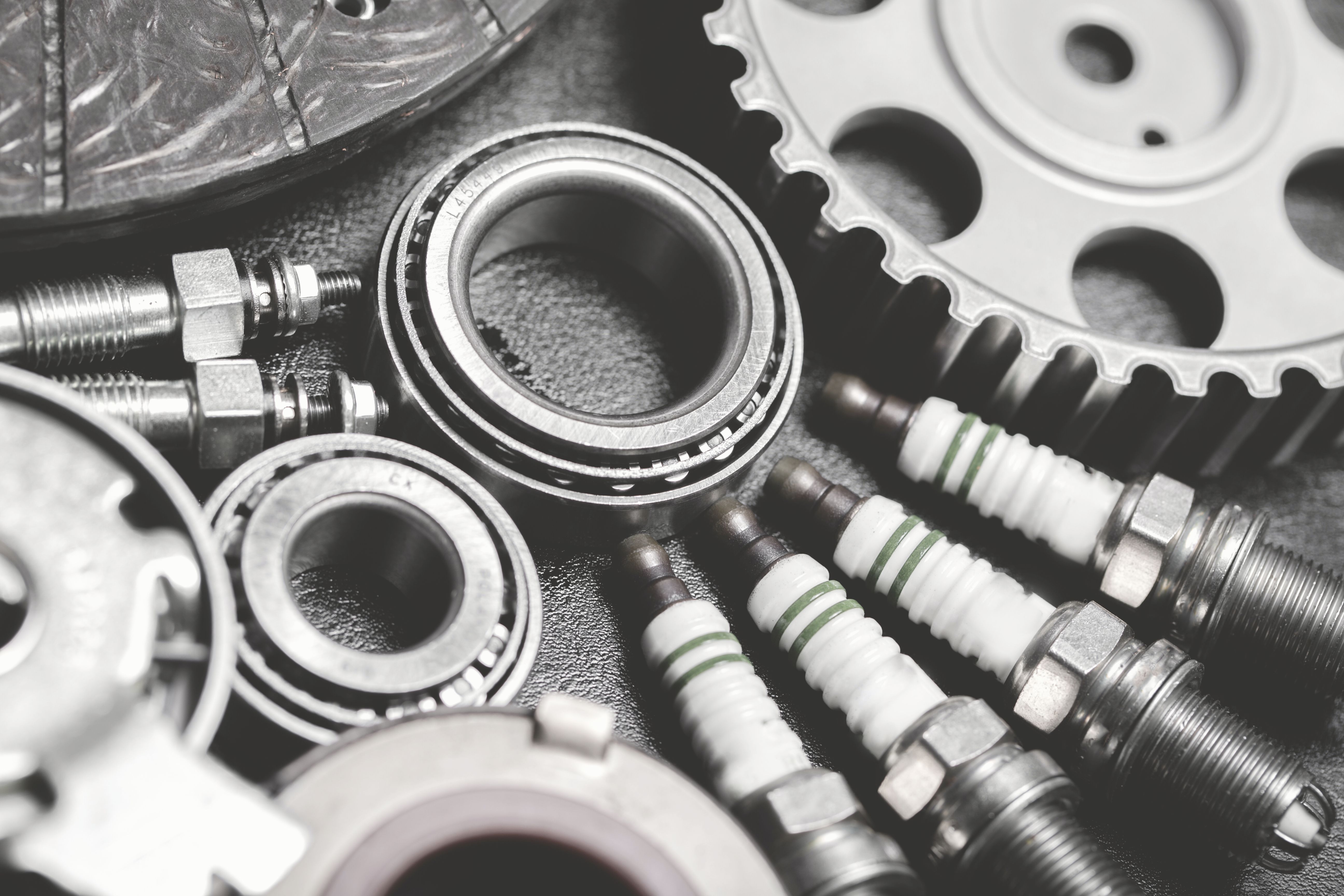
In some ways, pricing for auto repair shops should be easy, right? You have your costs of parts, you have the cost of labor, and you then calculate the profit margin you need. That said, some of these decisions aren’t as straightforward as they first seem.
Say it’s your policy to charge double what an item costs you for your margins to make sense. It’s simple, it’s straightforward – and it frankly won’t work. A 50% profit is good, but what happens when you get a $2,000 rebuilt transmission? You can’t charge the customer $4,000 for that – they won’t pay it. Instead, you’ll have to sell it for $2,500. What you do there will now affect the rest of your parts pricing.
It’s why we work with our clients to understand better how to price their parts. With that knowledge, you can understand exactly what you should charge for every item in the shop – and confidently price those parts so that your business can stay profitable, healthy, and ultimately grow.
For all intents and purposes, there are three items you’ll want to check off your list to be able to set prices as an auto shop. Those three things are market research, creating a parts pricing matrix, and setting your labor rate. We’ll go into each of these individually in a second, but first we thought we’d talk about the timing of a price change.
There are a couple of situations that might trigger a price adjustment for an auto shop. The first and foremost is when you get your financial statement from your CPA. They’ll go over your goal profit margin and help you understand where you’ll need to make adjustments – either to your parts pricing matrix or your labor rate.
If you don’t have a CPA? That’s OK. This will be a lot more complicated, but hopefully after this article, you’ll at least have the basics down on what you need to know.
When you’re an auto repair shop, it might sound funny to call around and ask for pricing – but that’s exactly what you should do. Call dealers in the area and ask some questions about how much they charge for services. Ask what they charge for a synthetic oil change, brake jobs, coolant flushes etc. These are called canned services. As a shop, you should consider charging around what dealers charge for these services. Now, it doesn’t have to be the EXACT same, but this should give you some idea of the general vicinity of pricing.
You should also ask about labor rates. If their labor rate is $160 an hour and you’re at $99 an hour, you may have an opportunity to adjust that labor rate.
Most shops should aim for about a 55% gross profit margin. A parts pricing matrix is the best way to get there while also keeping your pricing competitive. Basically, think of it as a sheet that will show you, depending on the cost of the part, what the markup should be.
In general, most less expensive items will have a higher markup than big ticket ones. Let’s say from $.01 - $5 you might have a 300% - 400% markup. It makes sense, right? If you buy a lightbulb for 25 cents, no one is going to be upset that you charged them a dollar. They just want their lightbulb fixed.
From there, you can begin to chart your parts pricing matrix on a sliding scale, where as the dollar amount goes up, you’ll have a lower percentage on the markup. This isn’t set in stone. You can keep your matrix at a certain dollar amount and, from there, be able to make decisions on markups on a case by case basis. Your volume and the mix of what type of maintenance and repair work you do most significantly dictate how the matrix should be crafted.
Want an example of how to create a parts pricing matrix? Here’s one that we created recently for a client.
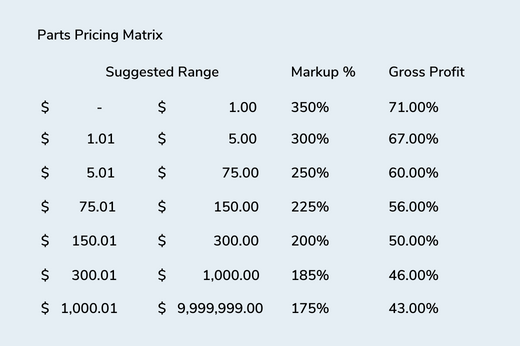
Let’s say you bought a part for $500 for years, but a supply chain issue starts to raise the price significantly – like to $750 or even $1000. That’s not out of the question, most of you have seen this happen during the pandemic years. The good news? A parts pricing matrix will let you know that you’ll have to charge a lower percentage to be able to stay competitive at that cost, but also since you are marking up by percentage you preserve your margins.
Let’s say you need to replace a water pump, a service you charge $600. On the order it should not say that the labor is $300 and the part is $300. On your RO it should just say “Water pump replacement: $600.” It might not be for the reason you think. This isn’t about obfuscating, but too often we see folks try to come back and say, “well, I called the dealer and they said they’d sell me the part for $250, why are you charging me $300?”
That’s a natural feeling for them to have, but it also isn’t based in reality. They aren’t thinking about costs of part delivery, time, availability etc. Simplifying your repair order can take that out of the discussion completely.
Let’s say you have a gross revenue of 1.2 million dollars. 55% of your sales are going to be parts sales. 45% is going to be labor sales as a top line number. Our goal is 20% net profit margin. Here’s how to best calculate your labor rate.
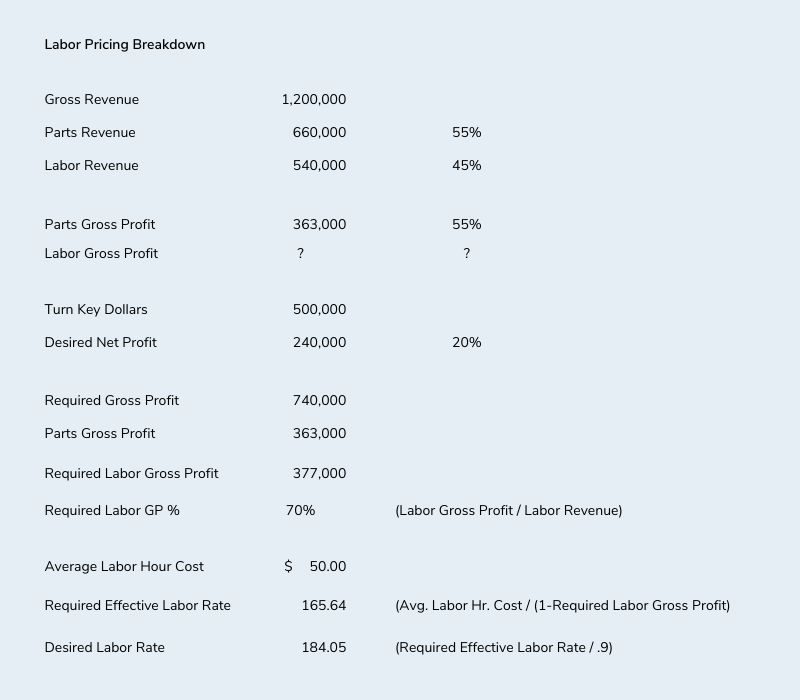
As you can see, even if you’re charging $150 per hour for your average labor hour cost, the required effective labor Rate is $165.64 an hour – and your desired labor rate is $184.05. That number will allow you to hit your goal.
We get it, sometimes these things feel a little overwhelming. It’s our experience that when you break them down into smaller, manageable chunks, you’ll actually see results. That’s why we work with our clients so closely. Not only can we help, but we also give them the skills to be financially literate and make these decisions. If you’re feeling overwhelmed, why not schedule a free call with us? You already created something special, let’s make sure it gets the attention and growth it deserves.
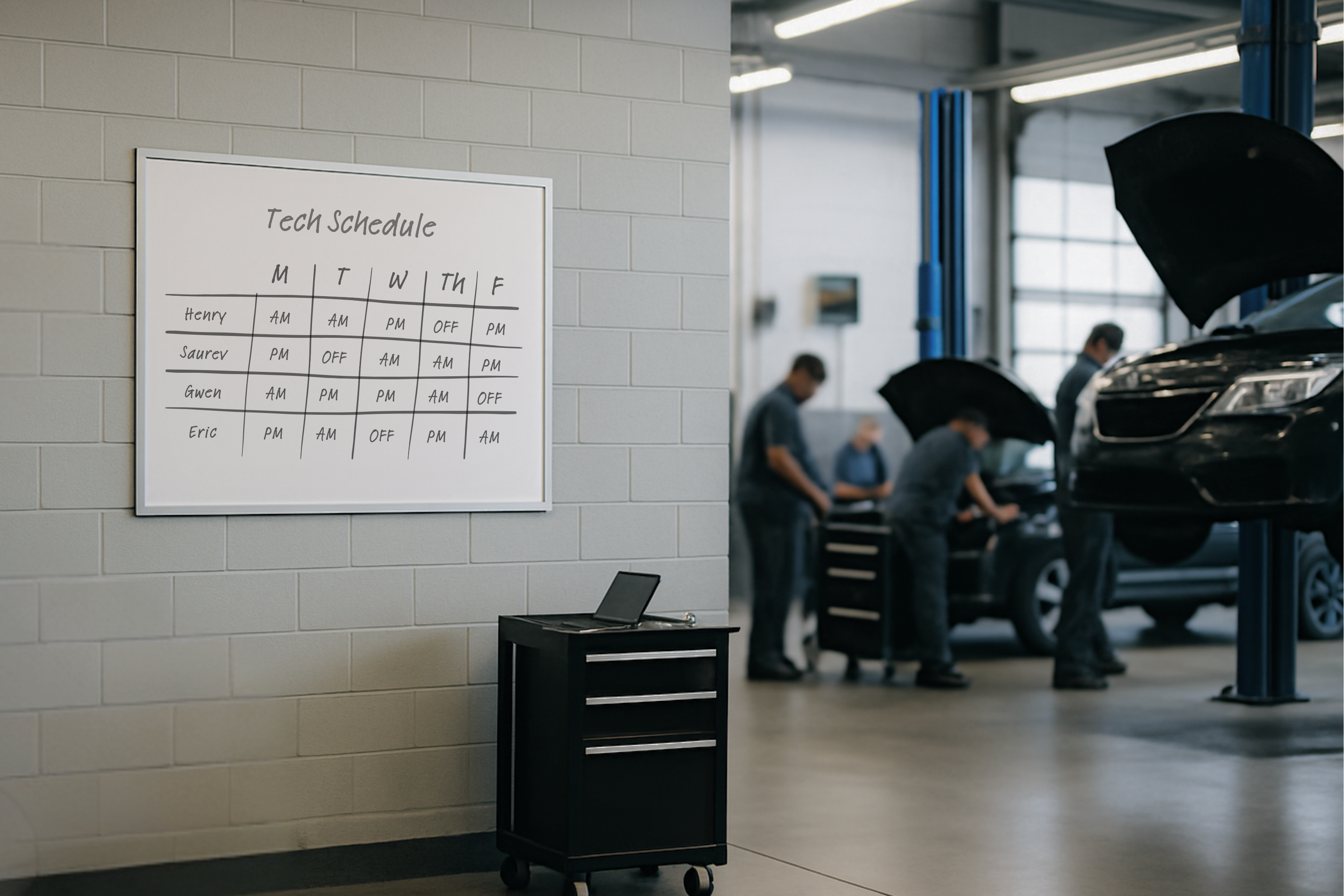
A lot of shop owners aren't convinced a four-day workweek can work in auto repair. You need cars in bays, techs turning hours, and steady...

If you've been in any shop owner forum or watched car videos lately, you've probably heard about the “Montana LLC” trick. The pitch sounds simple:...
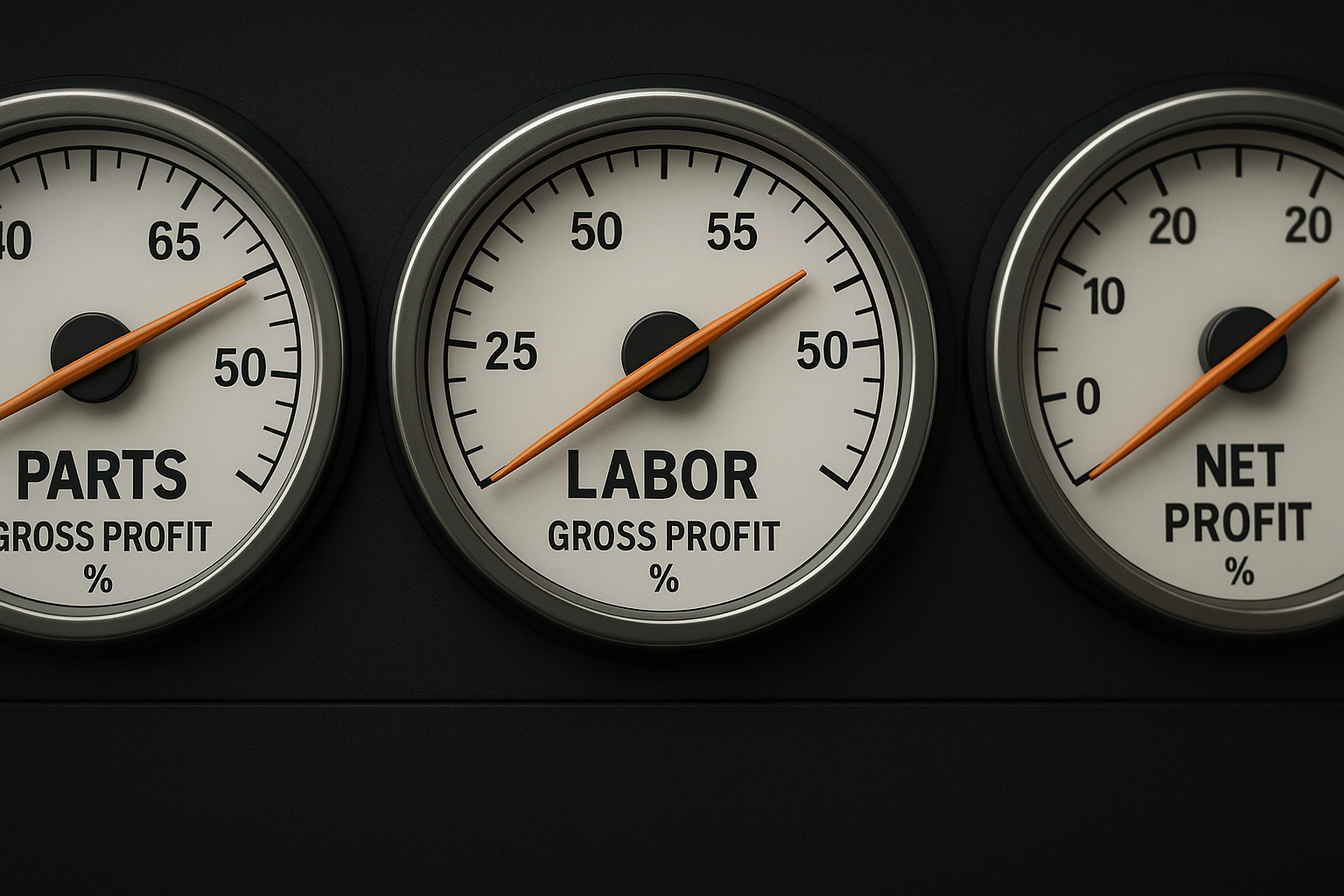
If you’re putting in the hours but not seeing the profit you should, it’s not your work ethic that’s the problem. It’s what you’re measuring. The...